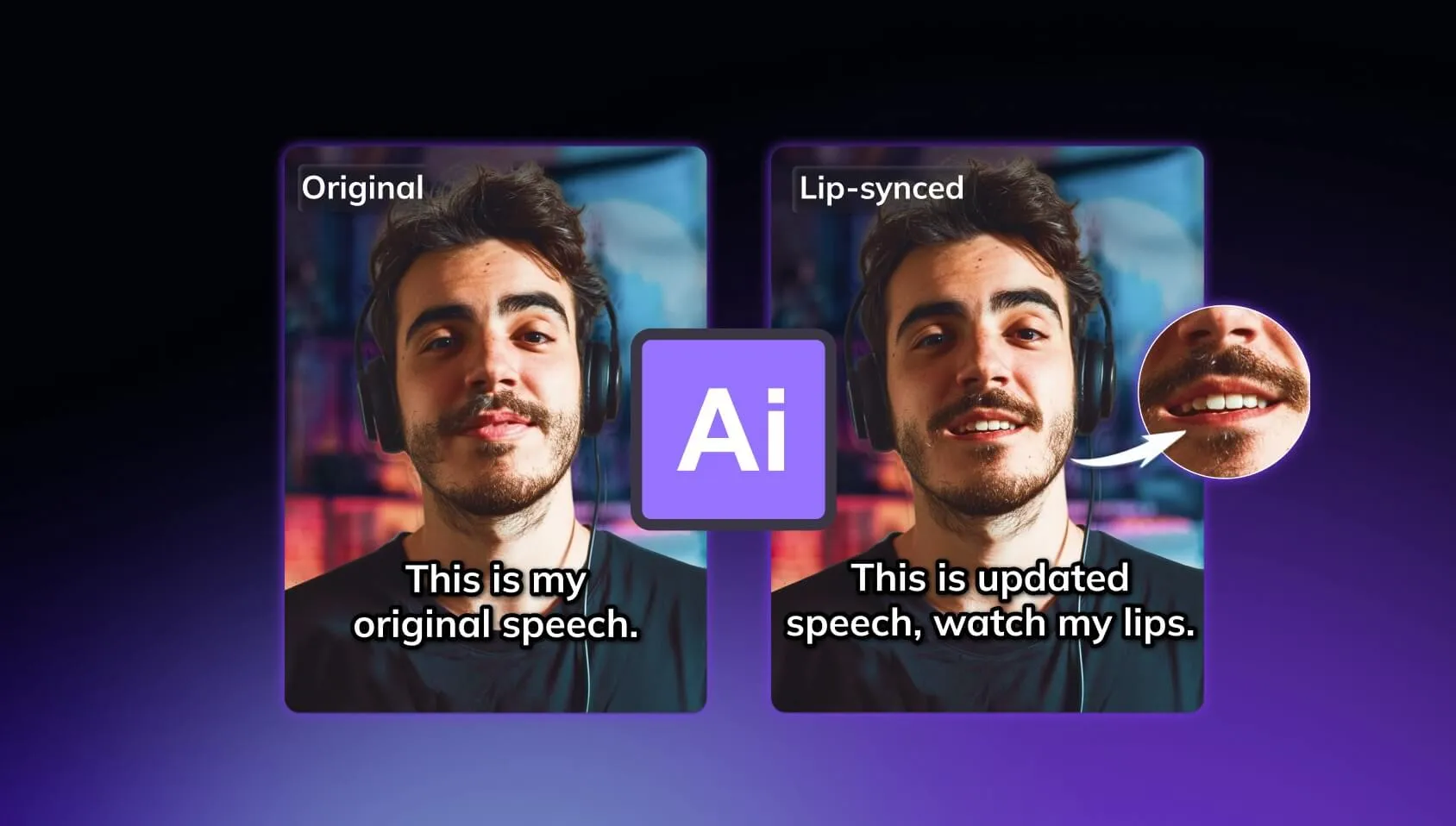Intro
Artificial Intelligence (AI) has revolutionized language translation. With AI technology, video translation becomes more affordable and efficient. The importance of translating videos cannot be overstated, as they connect with audiences worldwide, facilitating multilingual communication. However, translating videos presents challenges, particularly in matching audio with the speaker’s lips. Traditional methods often fail to capture the natural flow and emotions of the speaker. Fortunately, AI tools, especially lip sync technology, address these issues by providing smooth, accurate lip synctranslations.
Understanding AI Video Translation
Definition and Scope
AI video translation uses artificial intelligence to change spoken words in videos into another language. It translates the audio and matches it with the speaker’s lips. This can be used for school videos, movies, and work presentations.
Key Technologies Involved
Several important technologies make AI video translation work:
- Speech Recognition: Changes spoken words into text.
- Natural Language Processing (NLP): Understands and changes the text.
- Machine Translation: Turns text from one language to another.
- Lip Sync Technology: Matches translated audio with lip movements.
Why is it Important?
Global Reach and Accessibility
AI video translation significantly expands the reach of video content, making it accessible to a global audience. By translating videos into multiple languages, content creators can engage viewers from different linguistic backgrounds, thereby increasing their audience base. This technology is particularly valuable in educational settings, where it enables students from various countries to access and understand instructional materials. Additionally, it promotes inclusivity by ensuring that language is not a barrier to accessing information.
Enhancing User Experience
AI video translation greatly enhances the user experience by allowing viewers to watch videos in their preferred language. This personalized viewing experience helps retain the original speaker’s intonation, emotions, and delivery style, making the content more engaging and relatable. For instance, in films and TV shows, accurate lip-syncing ensures that the translated dialogue feels natural, preserving the authenticity of the performance. In corporate settings, it allows employees to receive training and information in their native language, improving comprehension and retention.
Cultural Sensitivity and Adaptation
Beyond mere translation, AI video translation can be tailored to accommodate cultural nuances and sensitivities. By understanding cultural contexts, the technology can adapt translations to be more culturally relevant and appropriate, thereby avoiding potential misunderstandings or offenses. This cultural adaptation is crucial for content that is intended for diverse audiences, ensuring that the message is conveyed accurately and respectfully.
What is Lip Sync in Video Translation?
Lip-sync technology in video translation primarily works by adjusting the lip movements of characters in the video to match the translated audio, rather than altering the translated language to fit the original lip movements. The key goal is to use AI or algorithms to reshape the character’s lip movements in the video so they synchronize naturally with the translated dialogue, avoiding the issue of “out-of-sync” lips.
This technology analyzes facial expressions and original lip movements and then modifies the mouth region to match the translated audio. By doing so, the lip-sync technology ensures that what viewers see aligns seamlessly with what they hear, even when the languages differ in rhythm or pronunciation.
Lip-sync technology is widely used in videos, advertisements for cross-language dubbing. It greatly enhances the viewing experience, providing a more immersive and realistic feel, even when audiences are watching content in a translated language.
Video Translation Tools with Lip Sync
1.Vozo AI
Vozo AI offers advanced video editing tools powered by proprietary LipREAL™ and VoiceREAL™ technologies. It includes features such as AI Video Translation, Lip Sync Generator, and Voice Editing. These tools enable users to translate videos into 29 languages with AI dubbing, while supporting voice cloning in 60+ languages and subtitle translation in 110+ languages. Users can sync lip movements to match the translated speech with ultra-realistic accuracy and even modify voiceovers. Trusted by over 7 million creators worldwide and backed by Google, Microsoft, and AWS, Vozo AI is suitable for creators, marketers, educators, and agencies looking to create multilingual content or repurpose videos for various platforms.
Pros:
- Integrates lip sync into both Rewrite and Translate features with two modes: Standard Mode (fast processing, ~10 minutes) and Precision Mode (high quality for complex angles, up to 2 hours).
- Allows users to manually choose which parts of the video to apply lip-sync.
- Supports videos with multiple speakers (up to 6 faces depending on plan), enabling precise sync to specific faces with manual voice assignment.
- Effectively handles non-frontal faces, faces in motion, and challenging scenarios like facial hair, head turns, and complex angles.
- Suitable for handling complex videos with multiple people or face swaps.
2.HeyGen
Overview: HeyGen integrates lip-sync technology into its video translation tool, allowing users to sync translated audio with lip movements for a more natural viewing experience. It’s designed for content creators who need quick, multilingual solutions for platforms like YouTube or Google Drive.
Pros:
- Seamless translation and lip-sync for multilingual content.
- Easy-to-use interface.
- Works well with YouTube and Google Drive.
Cons:
- Expensive credit-based pricing for large projects.
3.Rask.AI
Overview: Rask.AI supports video translation and lip-sync across 130+ languages, offering users the ability to manually edit translations for better accuracy. Its AI lip-syncing capabilities allow for precise syncing of the audio to the speaker’s lips in the video.
Pros:
- Supports a wide range of languages (over 60).
Cons:
- Higher pricing tiers starting at $50/month.
4.AKOOL
Overview: Akool’s Instant AI Video Translator provides real-time translations and advanced lip-sync capabilities for over 155+ languages. The tool is designed for seamless video translation with high-quality lip-syncing, especially suited for content creators and businesses.
Pros:
- Fast and accurate translations with lip-syncing.
- User-friendly interface with support for 155+ languages.
- Supports multiple video formats (MP4, MOV, AVI) and quality outputs (720p, 1080p, 4K).
Cons:
- Limited customization options.
- Advanced features are available only with higher-tier pricing.
5. SyncLabs
Overview: SyncLabs is an AI-powered real-time lip-sync tool designed to visually dub videos in multiple languages. It works with content such as movies, podcasts, games, and animations. The platform also provides an API for real-time lip-sync integration, making it versatile for developers and content creators.
Pros:
- High accuracy and real-time lip-syncing.
- Supports multiple content types (movies, games, podcasts).
- Free access with limited features (5 minutes per month).
Cons:
- Requires API integration for advanced use.
- Higher learning curve for new users.
How to Translate Videos with Lip Sync Using Vozo AI
Step 1: Upload Your Video Log in, navigate to the dashboard, and select “Translate & Redub.” Upload your video file or paste the video link.

Step 2: Choose Preferences Set the original and target languages, choose the number of speakers, and decide if you want to add subtitles. Vozo AI will process the video accordingly.

Step 3: Edit and Lip Sync Once the translation is complete, adjust the subtitles, timing, and script as needed. If desired, enable the lip-sync feature to match the translated audio with the speaker’s lip movements. Export the video in MP4 format with synchronized subtitles (SRT).

Future of AI in Video Translation with Lip Sync
The future of AI in video translation with lip sync is poised to revolutionize content creation, with innovative tools like Vozo AI at the forefront. Vozo AI integrates lip-sync into its Rewrite and Translate features, allowing creators to produce multilingual content with precise synchronization. A key feature is its flexibility in applying lip-sync to specific video segments, making it ideal for complex videos with multiple speakers. As AI progresses, real-time translation and emotionally accurate voice cloning will enhance the naturalness and immersion of translated videos.
Challenges and Opportunities
Despite the exciting advancements, there are several challenges to address. Privacy concerns remain significant, as AI tools process sensitive user data. Additionally, emotional accuracy in translations, particularly in voice cloning, is still a developing area that needs improvement to ensure the authenticity of translated content. The high computational requirements of these AI tools also present a barrier, as not all users have access to the necessary resources. Furthermore, the ethical use of AI in video translation is crucial to ensure fairness and transparency in how data is used.
Moving Forward
As AI video translation evolves, platforms like Vozo AI, with their manual editing features and ability to handle multiple speakers, are well-positioned to drive the next wave of innovation. Future developments will likely focus on refining voice cloning technologies, improving real-time lip-sync precision, and addressing ethical concerns. These advancements will open up new possibilities for global communication, making content accessible across languages while preserving the original emotion and intent of the message.

